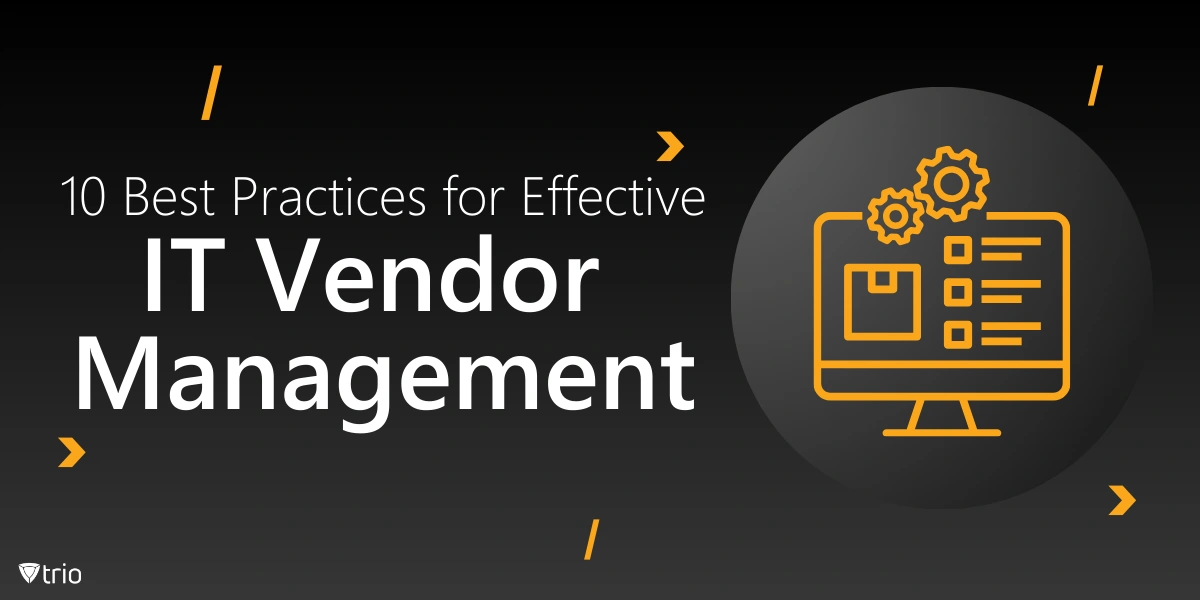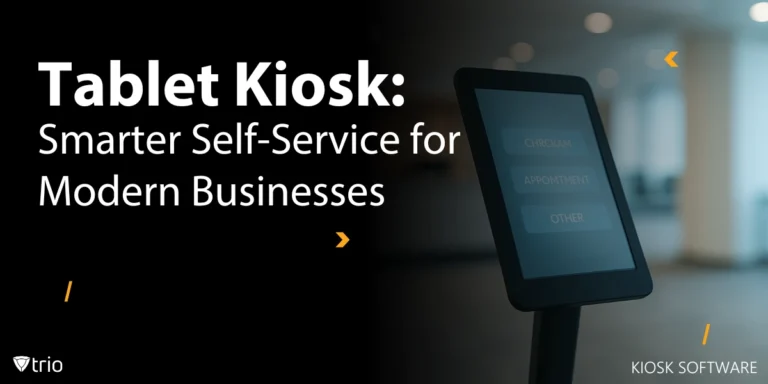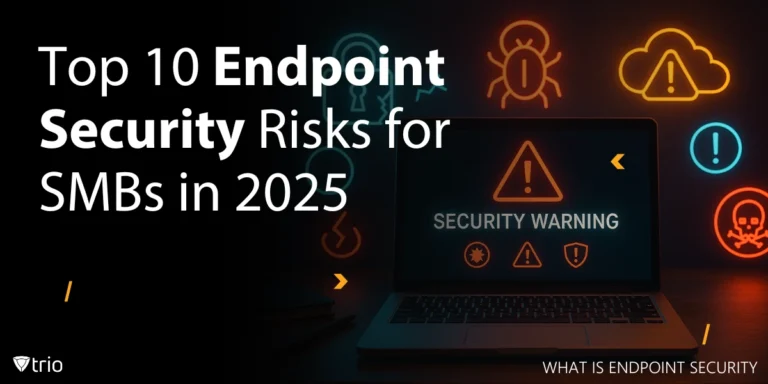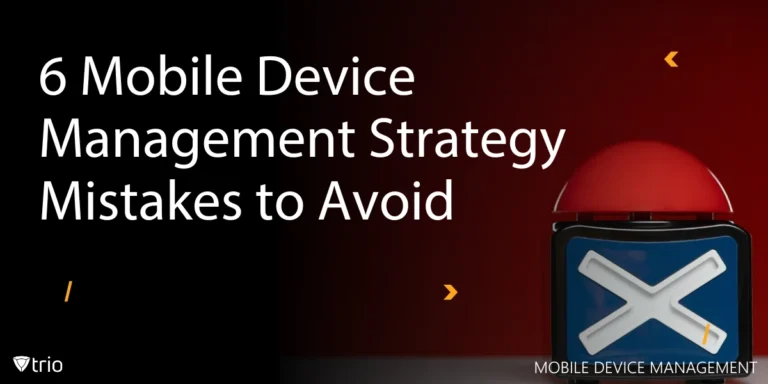As businesses increasingly rely on third-party vendors for software, hardware, and cloud services, managing external vendors and having a solid IT vendor management strategy is essential for IT departments. IT vendor management involves overseeing and controlling these vendor relationships—covering everything from vendor selection and contract negotiations to performance monitoring and risk mitigation. With the growing complexity of vendor ecosystems, effective management ensures that vendors meet contractual obligations, maintain high-quality service, and align with the company’s strategic goals. Without a clear strategy, businesses face heightened risks, inefficiencies, and increased costs.
What Is the Vendor Management Process?
The vendor management process involves selecting, monitoring, and managing external providers who deliver essential IT services and solutions, ensuring they meet a company’s operational needs. It begins with identifying the right vendors for services such as managed IT services or IT support tools, followed by negotiating contracts, setting expectations, and defining performance metrics. Collaboration between the vendor and internal IT teams is crucial for seamless integration into the company’s IT infrastructure. Additionally, vendor management can enhance IT process automation, reducing manual workloads and streamlining operations. This process is not only about efficiency but also plays a role in handling common IT problems, ensuring smooth, uninterrupted services. An effective asset management strategy is key to optimizing resource allocation and maximizing value from vendor partnerships. Proper knowledge management is key to continuously improving vendor relationships, ensuring long-term success.
Best Practices for IT Vendor Management
This guide will provide IT professionals with 10 best practices for vendor management to help streamline operations, mitigate risks, and achieve business objectives.
1- Define IT Vendor Management Roles and Responsibilities
One of the first steps to effective IT vendor management is defining the roles and responsibilities within your organization. Understanding who is responsible for vendor relations, contract negotiations, and performance metrics is crucial for smooth operations. Assigning dedicated team members to IT vendor management roles ensures accountability and clear communication with external vendors.
Furthermore, a well-defined structure allows for real-time decision-making, enabling your team to address vendor issues swiftly. This can significantly improve vendor relationships and help meet your business objectives. Having an internal team dedicated to managing vendor relationships also reduces the risk of oversight and ensures that no aspect of vendor management is neglected.
2- Establish a Robust IT Vendor Management Policy
An effective IT vendor management policy is essential for setting the guidelines and processes your organization will follow when engaging with third-party vendors. This policy should outline contract terms, compliance requirements, risk mitigation strategies, and performance expectations. Ensuring compliance with your internal policies and industry standards is key to maintaining a healthy vendor ecosystem.
A robust vendor management policy should be reviewed regularly to ensure it remains aligned with business goals and regulations. It is also essential to provide adequate IT vendor management training to staff involved in the procurement process to ensure they are familiar with policy updates.
3- Develop an IT Vendor Management Framework
A well-structured IT vendor management framework provides a clear roadmap for managing vendor relationships, from vendor selection to contract termination. The framework should cover the entire vendor lifecycle, ensuring that all stages—from onboarding to offboarding—are handled with precision. Performance metrics should be incorporated into the framework to monitor vendor performance regularly.
Additionally, the framework should align with your organization’s procurement process and IT management software. By integrating real-time vendor information into your IT vendor management framework, you can optimize operations, reduce costs, and improve vendor performance. The framework should also include risk mitigation strategies and regular audits to ensure compliance with industry standards.

4- Implement a Risk Mitigation Strategy
Risk mitigation is a critical aspect of vendor management best practices. Working with third-party vendors exposes your organization to potential risks such as data breaches, non-compliance with regulations, and service interruptions. Therefore, developing a risk mitigation strategy should be a priority for any IT team.
This strategy should include regular performance reviews, compliance checks, and security audits. Additionally, including sections in vendor contracts regarding information security and compliance with data protection regulations is essential. Your procurement team should work closely with legal advisors to ensure that the contract terms protect your organization from vendor-related risks.
5- Streamline Vendor Selection and Onboarding
Vendor selection and onboarding are critical stages in the IT vendor management process. A well-structured selection process can improve vendor performance by ensuring that only qualified vendors who align with your business objectives are chosen. During onboarding, it’s essential to provide vendors with clear expectations and ensure that they understand your IT vendor management policy and compliance requirements.
Using IT management software during the onboarding process can streamline the procurement process by automating documentation, contract negotiations, and initial performance assessments. This helps ensure a smoother integration of the vendor into your operations, ultimately leading to a more effective partnership.
6- Monitor Vendor Performance Regularly
Monitoring vendor performance is one of the key responsibilities within an IT vendor management strategy. Regular assessments help ensure that vendors are meeting the agreed-upon performance metrics and delivering on their contract terms. A performance review system should be in place to capture key data points such as service quality, compliance with deadlines, and adherence to security protocols.
Real-time monitoring tools can be integrated with your IT vendor management framework to provide continuous insights into vendor performance. These tools help your team proactively address potential issues and make data-driven decisions about whether to continue or renegotiate vendor contracts.
7- Prioritize Contract Negotiations and Compliance
Contract negotiations are a vital part of the vendor management process. Ensuring that your contracts are detailed, with clear terms regarding performance expectations, service-level agreements (SLAs), and data security, is crucial. Your IT vendor management strategy should also include a regular review of contracts to ensure compliance with changing regulations and business requirements.
Vendor contracts should also include sections related to risk mitigation, such as penalties for non-compliance with industry standards and provisions for contract termination in case of repeated failures. These clauses can protect your organization from long-term financial and operational risks.
8- Invest in IT Vendor Management Training
IT vendor management training is essential for ensuring that your team can effectively handle vendor relationships, manage contract negotiations, and enforce compliance. Training programs should cover both the basics of vendor management and the specific nuances of your organization’s IT vendor management framework.
Training should also focus on understanding the evolving best practices of vendor management and emerging industry standards. Keeping your team up to date with the latest tools and techniques will improve vendor relationships and ensure your organization remains competitive.

9- Use IT Management Software Vendors to Improve Efficiency
Implementing IT management software vendors can significantly improve your vendor management programs. These tools can help automate tasks such as vendor onboarding, performance tracking, and contract management. By using these solutions, your team can handle a larger vendor portfolio with minimal effort, ensuring that nothing falls through the cracks.
Additionally, IT management software vendors can provide valuable data insights that can improve decision-making in real-time. By leveraging these tools, you can improve vendor performance, streamline the procurement process, and ultimately save time and money for your organization.
10- Build Long-Term Vendor Relationships
A successful IT vendor management strategy extends beyond short-term interactions. Building long-term, mutually beneficial relationships with vendors ensures that they are invested in your success and are more likely to meet your expectations. Communication and transparency play a key role in fostering these relationships.
Establish regular check-ins to review performance metrics, discuss challenges, and explore opportunities for improvement. Long-term partnerships often lead to cost reductions, improved service quality, and better contract terms during renewal negotiations. The more invested a vendor is in your success, the more value they can bring to your organization.
How Trio Can Help with IT Vendor Management
A mobile device management (MDM) solution like Trio can streamline IT vendor management by providing centralized oversight and control of devices, applications, and data across multiple vendors. With Trio, IT teams can efficiently monitor device performance, enforce security policies, and track compliance, all from a single platform. This reduces the need to rely on multiple vendor-specific tools, minimizing complexities and ensuring consistent standards across the organization. By automating routine tasks like software updates and security patches, Trio also helps reduce downtime and vendor dependencies, leading to improved efficiency and vendor relationships.
Want to see Trio in action? Sign up for a free demo today and discover how Trio can streamline your IT vendor management process.
Conclusion
Effective IT vendor management is crucial for maintaining operational efficiency, mitigating risks, and ensuring that your organization meets its business objectives. By defining clear roles and responsibilities, implementing a comprehensive framework, and prioritizing vendor relationships, your IT department can streamline processes and enhance vendor performance. Additionally, investing in ongoing training and utilizing IT management software can provide the tools needed to manage vendors more efficiently. Remember, vendor management is an ongoing process that requires continuous attention and refinement. By following these best practices and implementing Trio, your organization will be better equipped to navigate the complexities of vendor management and drive long-term success.
Get Ahead of the Curve
Every organization today needs a solution to automate time-consuming tasks and strengthen security.
Without the right tools, manual processes drain resources and leave gaps in protection. Trio MDM is designed to solve this problem, automating key tasks, boosting security, and ensuring compliance with ease.
Don't let inefficiencies hold you back. Learn how Trio MDM can revolutionize your IT operations or request a free trial today!





